DJI created the Inspire series for those who are serious about filmmaking. You can do a lot with the more affordable Phantom drones from DJI, but they have some serious limitations. The larger and more expensive Enterprise drones, the Matrice series from DJI, offer a lot of flexibility but they are expensive and have their own limitations. For those who have Hollywood aspirations, but not a Hollywood budget, the right choice is a DJI Inspire.
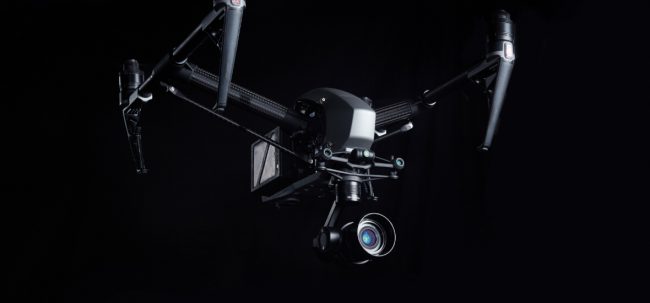
It wouldn’t be right to not mentions DJI’s competition at this point. Chief among the competitors is Yuneec. The Typhoon H from Yuneec is a lifting-leg drone with a camera gimbal that can rotate 360 degrees, similar to the Inspire drones from DJI. With a price tag in line with the less expensive Phantom drones, the Typhoon H is definitely worth taking a look at. Despite strong feature set and lower price of the Typhoon H, the Phantom and Inspire series from DJI remain more popular. We’ll revisit this at the end of the article, but let’s first take a look at what the Inspire 1 and Inspire 2 have to offer.
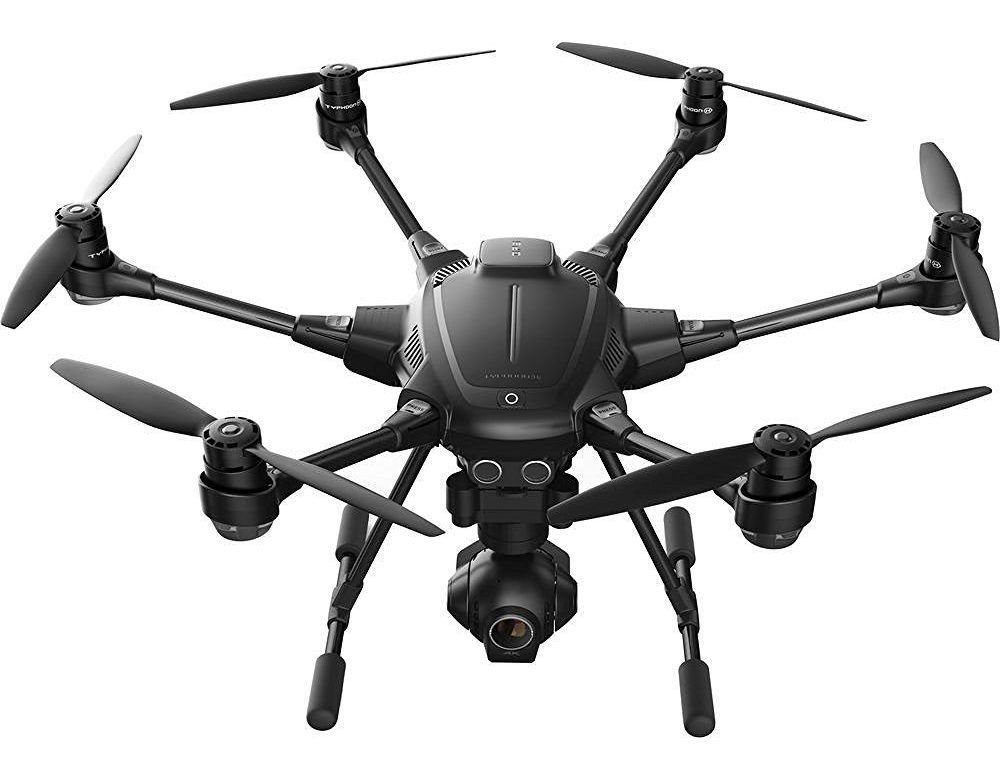
Inspired Drones
Both Inspires are impressive machines with an impressive list of features. They both utilize an aerodynamic transformative design that lifts the landing gear and propellers, allowing for a full 360 degrees of unobstructed filming. The Inspire drones are the only mainstream drones that take this particular approach to lift the motors as well as the feet, and it gives them their signature alien spacecraft appearance.

Both of the Inspire drones are incredibly stable indoor and outdoor, and they remain stable in winds that no Phantom or Mavic can fly in. Like all the latest DJI drones, including even the tiny Spark, the Inspires use GPS and a Vision Positioning system to stay stable. Also like the Spark, Mavic, and Phantom drones, the Inspires both have impressive features and flight modes and include fail-safes that will bring the aircraft back to you if the battery is low or the connection is lost.
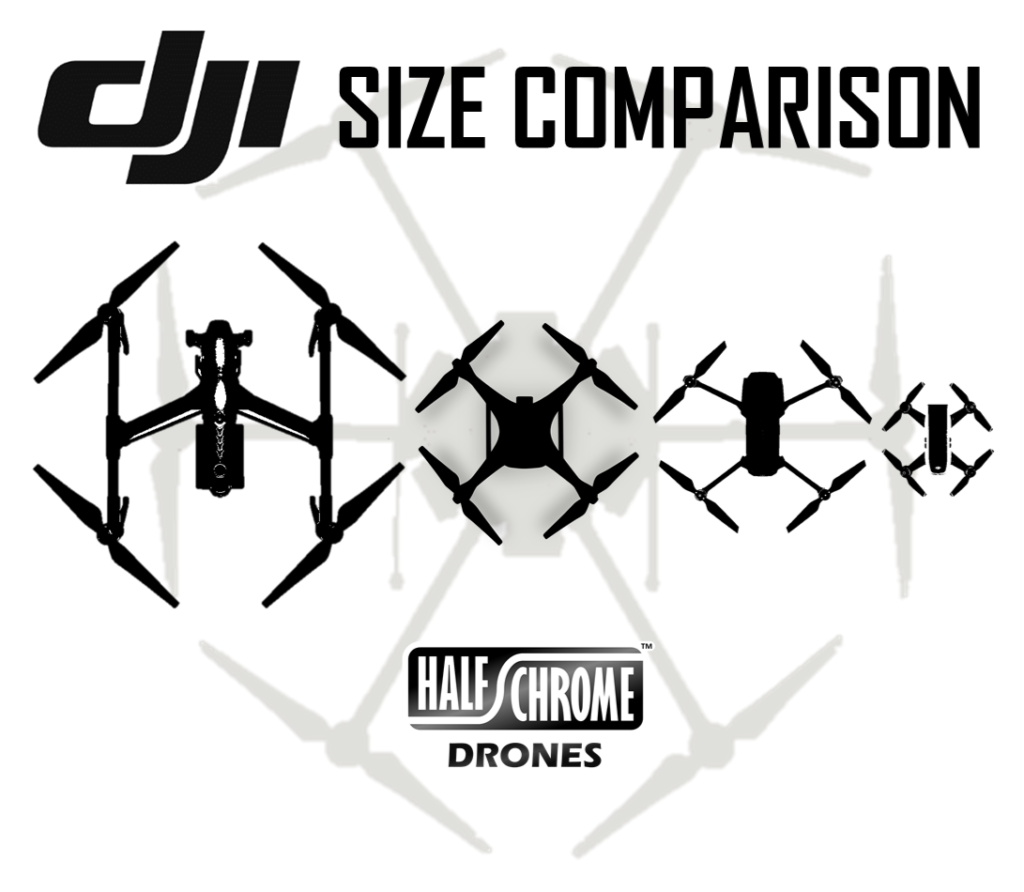
Inspire 1 Vs Inspire 2
Both the Inspire 1 and Inspire 2 are spectacular machines, but they have some very important differences. One of the biggest differences is cost. The Inspire 1 starts at $1999, and the Inspire 2 at $2999. The added cost of the Inspire 2 is significant, but so too are the improvements that it brings to the table. Is the price of the Inspire 2 worth it? Before you can answer that, you need to understand the complete cost roll-up of the two drones. We have configured two different packages for each of the Inspire drones – a low-cost option and a pro option. We have made some assumptions about how much memory and how many batteries you may want, but the results are revealing.
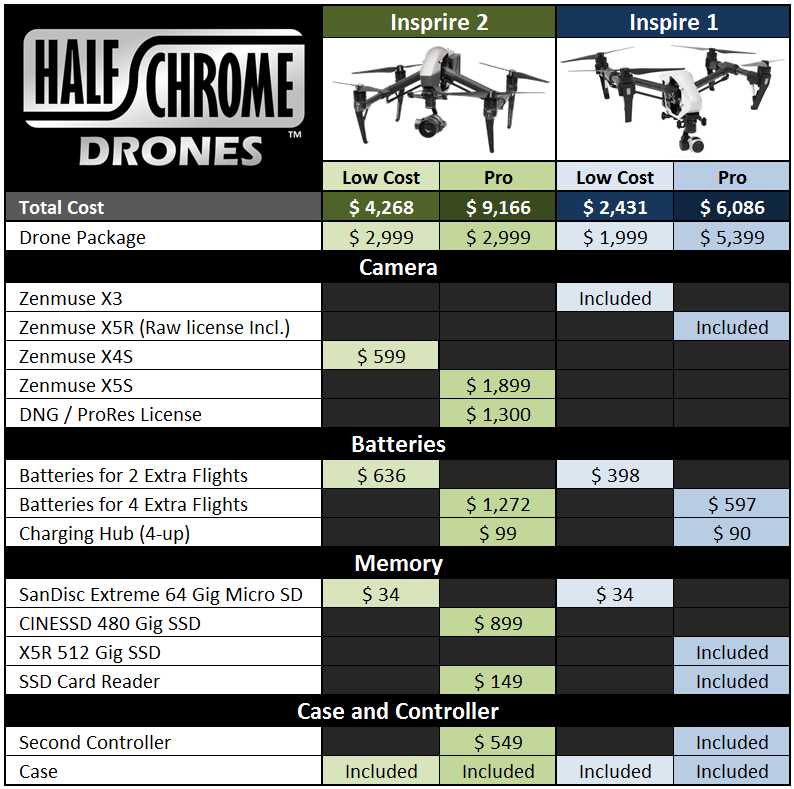
As you can see, the actual additional cost difference for getting an Inspire 2 is about $2,000 to $3,000, not the $1,000 suggested by the starting price. The Inspire 1 comes with a lot more included, not the least of which is a camera and all the licenses required to use it. You will also spend about $1,600 on an SSD Card and a second controller for independent camera control of your Inspire 2. Batteries are much more expensive for the Inspire 2, but the added cost is worth it…you’re about to find out why.
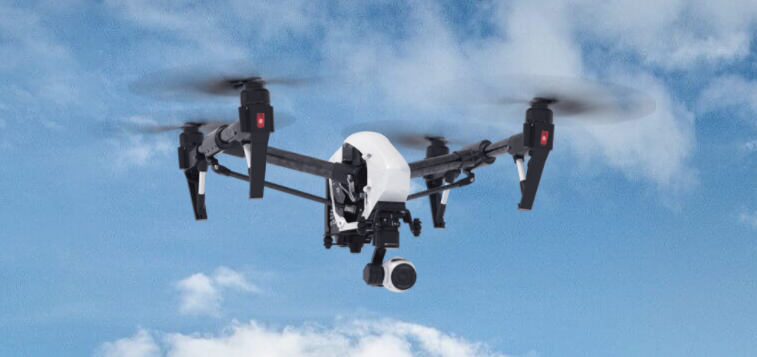
Is the Inspire 2 Worth the Extra Cost?
Clearly, the Inspire 2 is expensive, which is why the Inspire 1 remains a popular purchase for many pilots and businesses. So let’s go through the most important upgrades of the Inspire 2 and see if the improvements warrant the price.
Redundancy
The Inspire 2 is less likely to lose control or fall out of the sky all because of one simple reason, redundancy. With two batteries, two IMUs, and two barometers, your four-figure investment is less likely to suffer from a single point of failure that brings it out of the sky. While we are not aware of any widespread failure mode of the Inspire 1, the Inspire 2 certainly has a higher level of reliability.
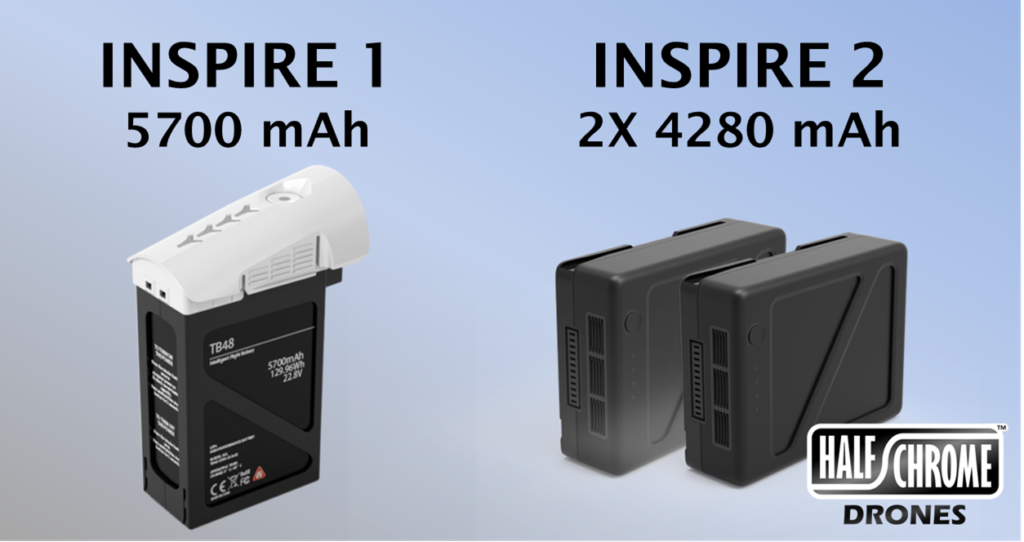
There is one hidden bonus with the dual batteries of the Inspire 2 – they are smaller. With each battery having less than 100 watt-hours of energy, you can carry unlimited quantity onto an airplane. This is a major benefit to a drone pilot who needs to travel by air since you are not supposed to put spare Lithium batteries in checked luggage.
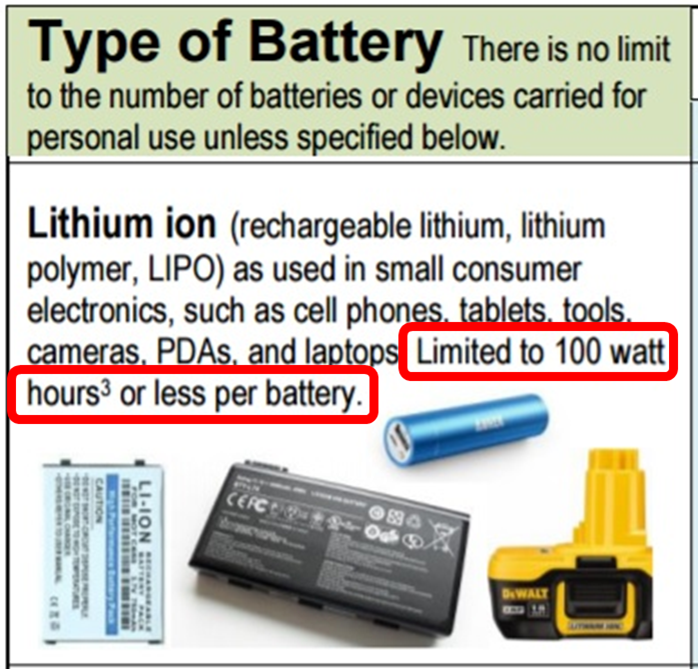
Camera
There are multiple camera options for both the Inspire 1 and Inspire 2. Much to the disappointment of Inspire 1 owners, the Inspire 1 cameras can’t be used on the Inspire 2. Similarly, Inspire 2 cameras are not backward compatible to the Inspire 1.
Inspire 1 Cameras
The advantage of the Inspire 1 is that it currently has a broader assortment of cameras available including the Z3 zoom camera and the XT thermal imager. Let’s start with the three most popular cameras available for the Inspire 1.
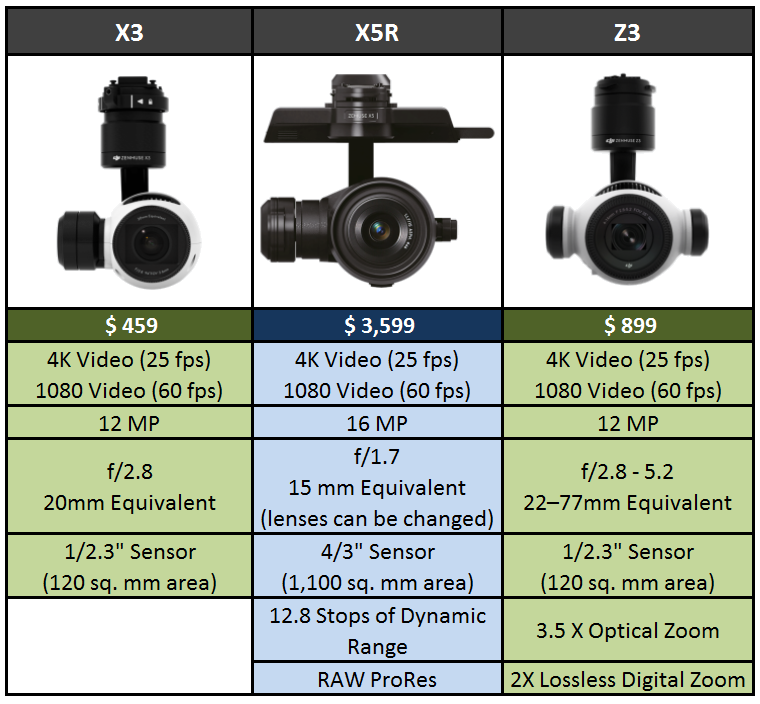
The RAW-capable X5R is by far the most expensive camera of the three but Pros often demand the editing possibilities offered by RAW footage. DJI does not recommend using the 7X zoom of the Z3 for video capture, stating that the small amount of camera shake will be noticeable when recording video. The Z3 can be used effectively for photography and is a popular lens for search and rescue efforts. Other cameras not listed in the table include the X5, a $1,799 camera that doesn’t have RAW capability, or the specialty XT thermal camera.
Inspire 2 Cameras
The Inspire 2 has the top-of-the-line cinematic camera, the X5S. Shockingly, it is actually less expensive than the X5R used on the Inspire 1. The X5S has more pixels, supports 5.2 K video and 4K video at 60 frames per second. The top cameras for both drones sport micro four-thirds sensors, but the Inspire 2’s X5S has an upgraded 20 MP sensor.
Two Person Controls
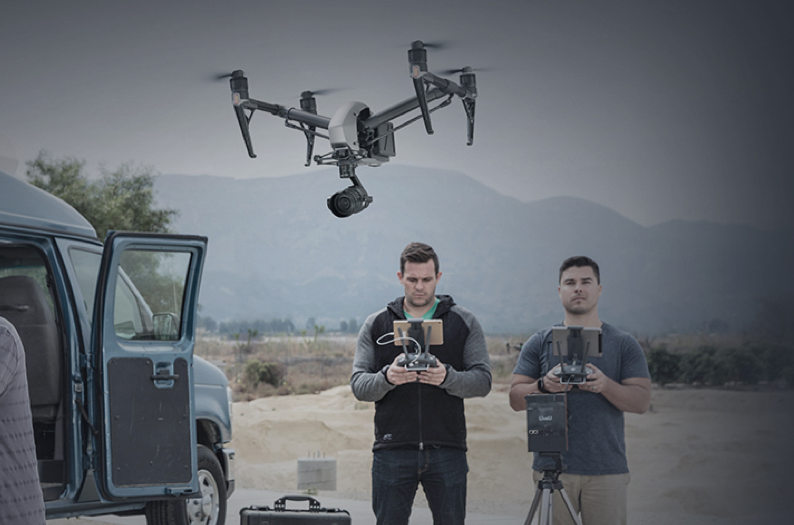
One of the best features of the Inspire 1 is the ability to have one person control the drone and a second person to control the camera. The issue was that both operators had to rely on the same video feed from the camera filming the footage. The Inspire 2 added a dedicated FPV camera on a 2-axis gimbal dedicated to the pilot. Now the pilot can focus on flying the aircraft and the photographer can focus on the shot.
Flight Time
When the Inspire 1 was launched, its flight time of 16 minutes was impressive. That no longer is the case. The Inspire 2 solved this issue by allowing it to carry 2 batteries that can even be hot-swapped. The Inspire 2 has an impressive 27 minutes of flight time. Even though the full cost of the Inspire 2 batteries is substantially more, it is totally worth it for the extra flight time and the ability to carry those batteries on a plane when you travel.

Speed
The Inspire 1 clocks in at 49 mph, but the Inspire 2 again ups the ante to an impressive 58 mph. It has sports car-like acceleration and can go from 0-50 mph in 5 seconds. Larger propellers and more powerful motors allow the Inspire 2 to pitch forward more than the Inspire 1 and reach highway speeds.
The Inspire 2 is an impressively fast drone.
Obstacle Avoidance
The Inspire 1 lacks any obstacle avoidance features. The Inspire 2, however, uses a complex system of sensors and cameras on the front, back, and top of the drone that help keep it both stable and safe.
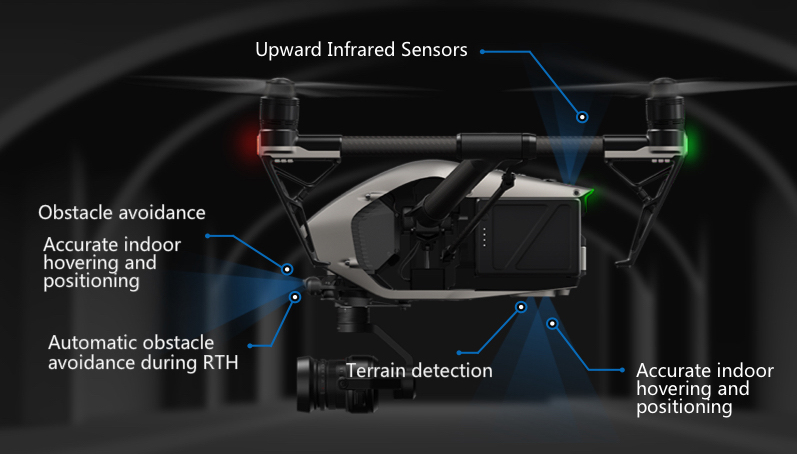
Fly More
The Inspire 2 can be flown in conditions that the Inspire 1 can’t. With an integral heater, the Inspire 2 can be flown in colder temperatures than the Inspire 1. DJI does sell a heater for the Inspire 1 batteries, but the heater can’t fly with the drone.
Max wind speed is stated to be 22 miles per hour (10 meters per second) for both drones. But with more power and higher top speed, the Inspire 2 can handle higher wind speeds better than the Inspire 1. Both drones can handle much more than the stated 22 mph.
Design
The Inspire 2 is a little larger and heavier than the Inspire 1. The newer Inspire 2 has a matte black and gray finish, instead of glossy white. The darker color helps ensure that you don’t see reflections of what you are filming below the aircraft.
The Verdict
There are two downsides to the Inspire 2: Price and camera selection. The Inspire 2 currently doesn’t have a zoom lens or thermal camera option, but those cameras are likely coming if DJI sees a demand for them. On the other hand, the Inspire 2 wins on so many levels:
- Flight time
- Better professional camera with 5.2K as well as 4K at 60 frames per second
- Obstacle avoidance
- Faster speed
- Second FPV camera
- More flight modes
- Ability to legally travel by air without shipping your batteries
- Integral battery heater
- Redundant systems including batteries, IMUs, and barometers
So is the Inspire 1 still a good buy considering all the upgrades to the Inspire 2? If you are strapped for cash then there is one thing that an Inspire 1 will definitely buy you – respect. If you are a professional pilot then there are some customers who will not be impressed when you show up to a job toting a DJI Phantom. The Phantom 4 Pro does have a better camera than Inspire 1’s entry-level camera, but many customers won’t know that. Even with the least expensive camera, the Inspire 1 has at least one other huge benefit over a Phantom – you will never see the props in your video.
| Check the Inspire 1 price from DJI | Check the Inspire 2 price from DJI |
Is the Inspire too Much for You?
Does even the lower price of the Inspire 1 Intimidate you? The single best drone to start a business right now is the DJI Phantom 4 Pro. Every business needs one, even a business that owns an Inspire. So, go get the P4 Pro.
If you think your customers will buy into the professional look of the morphing drone, you may wow some people with a Yuneec Typhoon’s lifting legs. The Typhoon has some excellent features at an excellent price but ultimately it is limited by its camera, which is not as good as the cameras available on the DJI Phantom 4 Pro or Inspire drones.
| Check the current price of the Phantom 4 Pro | Check the current price of the Yuneec Typhoon |
Disclosure:
This website contains affiliate links, which means we receive a commission if you make a purchase using these links. For full details visit the disclosures and disclaimers page.
- Beginner
- Discounts
- Wedding
- Youth


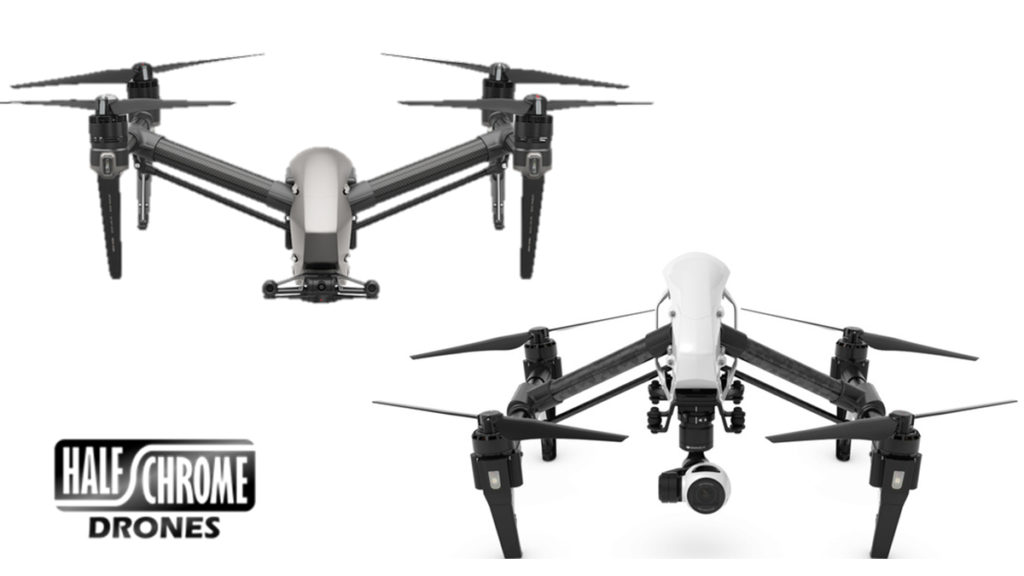

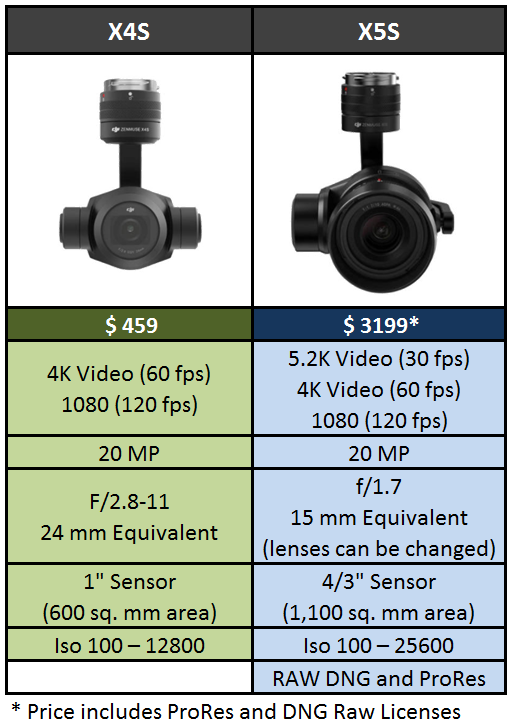
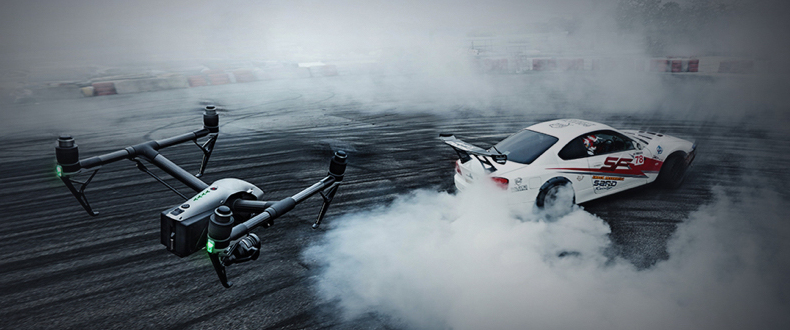

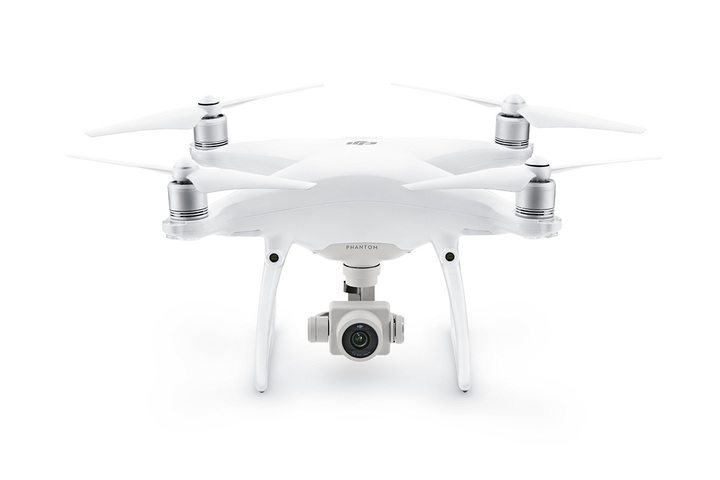














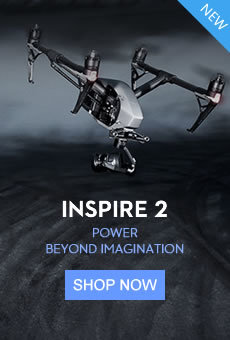


Pingback: Best Drones Now | Half Chrome Drones
Pingback: If You Want to Take High-Quality Aerial Photos, Start Here | Half Chrome Drones
Pingback: JJRC H31: The Nearly Indestructible Waterproof Drone | Half Chrome Drones
Pingback: Which DJI Drone is the Best for You? | Half Chrome Drones
Pingback: Top Tricks for Aerial Photography Magic - Half Chrome Drones
Pingback: Yuneec Releases 3 New Drones: Typhoon H Plus, Firebird FPV and HD Racer - Half Chrome Drones
Pingback: DJI Phantom 5: Check Out the Awesome New Features!
Pingback: Use Droneblocks to Program Your Phantom, Inspire, Matrice and Tello
Pingback: DJI PHANTOM 5 - Should You Really Need to Wait for it? - GADGETWEEKS.COM
Pingback: El Mejor Dron - Half Chrome Drones
Pingback: DJI Phantom 4 Pro V2.0 vs Yuneec Typhoon H+: Battle of the Big Boys!